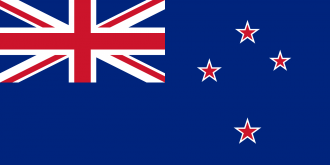According to the New Zealand’s Defence Industry Association (NZDIA), it is estimated that the local defence industry provides some 2,500 jobs and NZ $125 million in wages, while it generates some NZ $60 million in profits, to the benefit of New Zealand’s economy.
Among the 100 NZDIA member companies, are Callaghan Innovation, Babcock, SafeAir, Brunton Engineering, BECA, Datacom Systems, Fuji Xerox NZ, Fulton Hogan, Mainfreight International New Zealand, Rheinmentall, McKay Electrical, Lockheed Martin, Rolls-Royce Holdings, SAAB NZ, and multiple Small to Medium Enterprises (SMEs).
Local Defence Industry members are realistic, and understand that for major capital acquisitions, the NZDF will need to source the associated materiel from abroad. Nevertheless, opportunities for local defence suppliers in such cases lie in whole of life support and local presence/representation of the related international prime contractors.
The New Zealand Defence Industry currently supports the NZDF with smaller value items and services, such as Uniforms, Maintenance, Repair, Overhaul (MRO), Logistics, Training and Advisory Services and Technology, while it is part of the global supply chain for specific parts and components.
New Zealand cannot be considered a major exporter of defence materiel, since its relevant exports in the last decade (2005-2015), amounted to a mere US $83 million. These exports included only Aircraft and Engines related items and services and were directed to the US (91%), Peru (7.3%), the UAE (1.2%) and Thailand (less than 1%).
In order to better tackle the NZDF requirements, the government has realised the importance of reinforcing the indigenous Defence Industry. Therefore, as part of associated initiatives, the government in collaboration with the Defence Force has developed a framework to promote early engagement with local organisations and companies (the “Defence Industry Engagement Strategy”), aimed at the reduction of total costs of asset ownership.
In addition, the increased level of detail in the 2016 Capability Plan, including provisional estimates of cost and schedule for major projects, aims to ensure that the local industry will be fully informed, early on, about new opportunities, while ensuring transparency and ease of doing business. Finally, in order to aid in practice the realisation of the above, the NZDF has developed and adopted simplified and standardised Defence procurement documentation, as well as associated online tools and feedback mechanisms. All these, will allow the nation’s government to maximise the value for money of associated procurements, expand related domestic capabilities, while promoting efficiency, coherency and timing schedules adherence.
Given the major capital acquisitions that New Zealand has planned (according to the 2016 Capability Plan) for the next few years, opportunities for the whole life support of related assets have already been revealed, while local presence of international prime contractors is expected to be further strengthened.
Moreover, it should be noted that in the next 5 years (up to 2020), 104 projects are anticipated to offered for tendering, while NZDIA members will be interested in engaging also with the local construction industry, under the NZ $1.7 billion provided for associated buildings, infrastructure and facilities. Through the above, opportunities may appear for the New Zealand’s Defence Industry; therefore, the country’s Defence Industry, could anticipate itself as a notable defence market player, rather than just a supporter of capable suppliers.

